Taj Mahal is an iconic image of India for the world. It is considered as one of the most beautiful building ever created and counts among the seven modern-day wonders of the world. It is basically a white marble mausoleum built by Mughal emperor Shahjahan in memory of her beloved wife Mumtaj Mahal. It is one of the finest example of Mughal Architecture, a style that combines elements from Islamic, Persian, Ottoman Turkish and Indian architectural styles.
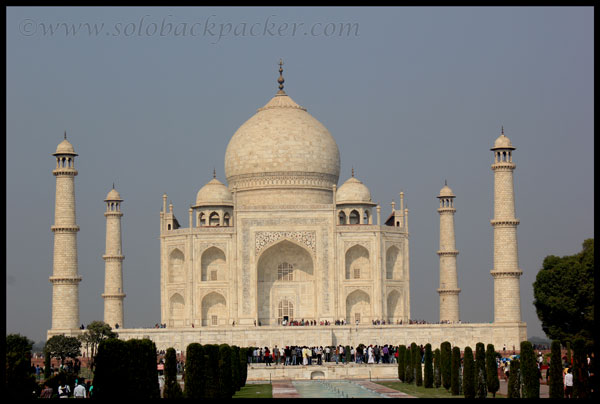
Where it is situated? Taj Mahal is situated on the bank of river Yamuna in the city of Agra. Agra is a major city in the western part of Uttar Pradesh state. Agra remained an important center of power during the reign of initial Mughal Emperors and served as the capital of the empire till 1658, before shifting of the Mughal capital to Delhi. But, today it is only a shadow of its past glory. This is a city full of pollution, especially smog and litter, and tourists are tortured by the increasing crowd of touts and hawkers at every monument, mosque, temple or palace. But still, a trip to India can not be considered completed without visiting the Taj Mahal in Agra.
How to reach Agra? Agra is well connected to the all part of India with an excellent road and rail network. Major trains on Delhi-Mumbai and Delhi-Chennai routes make a stopover at Agra Cantonment Station. You are likely to get a train to Delhi anytime throughout the day and night from Agra. Agra Cantt station is approx. 10 kms from Taj Mahal.
Agra is situated on the National Highway 2. NH 11 and NH 3 also pass through this city. There are direct buses available to Jaipur, Delhi, Gwalior and many more cities from Idgah Bus Stand and Interstate Bus Terminus (ISBT) in Agra. Idgah Bus Stand is closed to Agra Cantt Station (1.5 kms), while ISBT is approximately 12 kms away from Taj Mahal towards Sikandara.
Agra do posses a small airport, but there is no scheduled flight right now. Agra airport is near the Agra Cantt Station and approx. 10 kms away from Taj Mahal. But since there is no scheduled airlines, most tourists travel via Delhi Airport or Jaipur Airport. There are plenty of airlines serving Delhi Airport from worldwide locations. Delhi is the biggest airport in terms of air traffic in India and majority of domestic airlines, those serve here also offer competitive airfares through online ticket booking. Agra is 220 kms away from IGI Airport, Delhi and 240 kms away from Jaipur Airport. From Delhi and Jaipur, there are plenty of choices in terms of buses, trains and cabs to reach Agra.
For a budget traveler, a suggested way to reach Agra is by Bhoapal Shatabdi Express or Taj Express from Delhi. They departs from Delhi in the morning at 06.00 AM and 07.10 AM respectively and reach Agra Cantt Station at 08:06 AM and 10:05 AM respectively. You should leave trains at Agra Cantonment Station and from there you can take a shared auto-rickshaw (Rs.10) or reserved auto-rickshaw (Rs. 60-70) to Taj Ganj (10 kms away from Cantonment Railway Station), which is in the vicinity of Taj Mahal. Taj Ganj is a backpacker’s paradise and full of small and mid-range hotels and restaurants.
Entry to The Taj Mahal: South Gate of the Taj Mahal is just 300 meters away from Taj ganj, while west gate is just 700 meters away. We went via South Gate and it was unexpectedly less crowded. There was no queue on the ticket window at that time. Here are some useful information regarding the entry to the Taj Mahal :
Timings: The Taj Mahal is open from 6:00 AM to 7:30 PM every day except Friday.
Ticket Cost: For Indians : Rs.20 and for Foreigners: Rs.750. For the citizens of SAARC and BIMSTEC countries it is Rs.510 (with valid identity cards). Children below 15 years of any nationality can visit it free of cost.
Ticket counters are available at Southern, Eastern and Western Gates. Ticket counters at Eastern and Western gates open at 6:00 AM while at Southern gate it opens at 8:00 AM.
Facilities Available:
1. Lockers are available at eastern, western and southern entry gates. At western gate they charge some fee to use the lockers, at other two gates these are free of charge.
2. Clean filtered drinking water facility is available, however you can carry your own water bottle inside.
3. Bathrooms are located at the both sides of main entrance. Foreigners can use it free of charge. Indians have to pay Rs. 2 for the urinals.
4. Except inside the main mausoleum and Taj Museum, photography is allowed free of cost everywhere. Video camcorders are allowed for certain areas (upto the Main Gate known as The Great Gate) at the cost of Rs. 25. Video lockers are available near The Great Gate to keep your camcorders safe.
5. No eatables (whatever is this) are allowed beyond the security checkpoints. Tripods are also not allowed, however you can carry your camera bags, even the bulky bags with lenses and other accessories.
Our Entry in Taj Mahal: After entering via South Gate, we reached to the main entrance, The Great Gate (Darwaja-i-Rauja), of the Taj Mhahal. Beyond the gate, there was an incredible structure ever made by humans.

There was a strange excitement in our mind and eagerness in the heart to see the Taj Mahal as soon as possible. Although, both of us had seen Taj Mahal earlier, but that time we both were too young to understand this masterpiece of love. It was our first chance to view The Taj after our wedding and between that thrill and excitement, when I saw the first glimpse of the Taj Mahal, I became speechless. It was such a beautiful sight! A big beautiful Mughal garden (Charbagh) between us and The Taj Mahal, a narrow water canal in the middle of the garden, water droplets coming out from the fountains, and at the far end of these, there was a building, made of white marble and considered as the symbol of love worldwide. The beauty of that sight is beyond the limit of my words. Taj Mahal was completely basked by the rays of the morning sun. It is common saying that the moods of the Taj varying from dawn to dusk with the rays of the sun. Its well worth visiting any time in the day. The white marble of the Taj are changing colors with the passage of the day from yellowish and orange in the morning to milky white during the day and again light orange in the evening. We stopped for a while at the main entrance and admired the beauty of the Taj Mahal. I clicked a lot of pictures there.
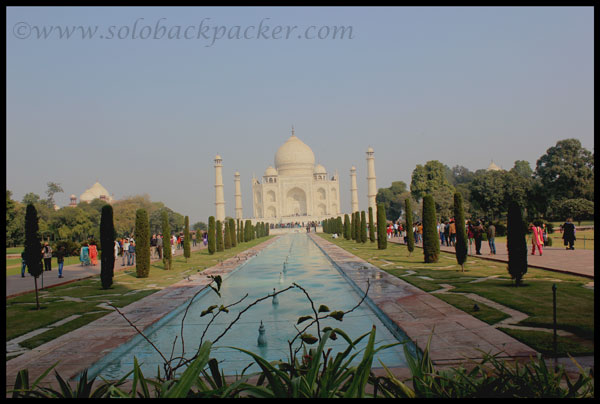
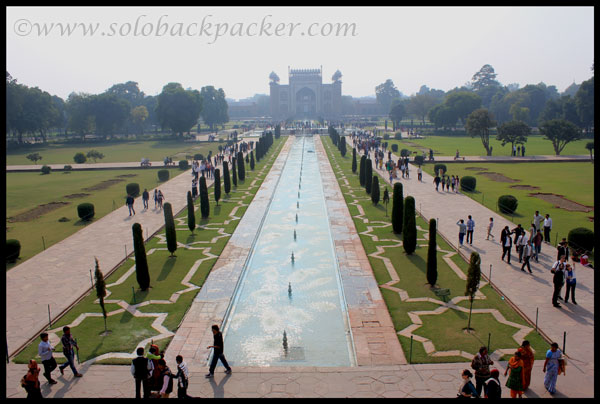
The crowd was increasing with the passage of time. Walking along the beautiful fountains of the Charbagh, we reached on a big marble slab surrounded by water canals. There was a pond constructed on this slab and four marble benches was there on the four sides of the pond in front of the Taj Mahal. One of those benches, that is located at far end from the Taj Mahal is considered as the VIP Bench. Whenever a big celebrity or diplomat is on the visit to Taj Mahal, he/she normally sits on that bench for a photo shoot. If you see any celebrity posing in front of the Taj Mahal, it is generally the same bench in the picture. This is reason why it is known as VIP bench. There is a big craze among the tourists to pose on that bench for a perfect picture and this is also the main USP of all the professional photographers, who are clicking tourist pictures on the payment basis there. Those photographers create a lot of chaos there and sometimes your turn can not come even after the wait of 15-20 minutes. We also waited for 15 minutes, but the crowd was only increasing. So we moved forward without sitting on that hot seat. Later while returning back, we got a chance to sit on that hot seat.
Moving further, we reached near that magnificent building, known as the Taj Mahal. We had to remove our shoes before climbing in the area around the Taj Mahal. There are shoe racks available at free of cost on the both sides of the garden. Despite of being a free service, you have to give some money to the person attending your shoes. There is no restrictions on this, but they ask you to give some money on your own wish. If you do not want to keep your shoes in the shoe racks, there is an alternate way to cover them with the shoe covers available there. These covers are also free of cost. After using please put off these shoe covers in the dustbins at the exit.
We kept our shoes in shoe racks and moved further.There are two layers of platform around the Taj Mahal. First layer is made of red stone and on this stands the Taj Mahal Mosque in the west side and Mehman Khana (Guest House) on the east side. In the middle of this platform, there is another raised platform of white marble. In the middle of this white platform stands the beautiful structure of Taj Mahal with four minarets at each corner of this platform. These minarets are inclined slightly outwards, so that, if because of any reason, they fall down, then the main structure of Taj Mahal remain safe from them.

Admiring and enjoying the beauty of Taj Mahal, we reached to the red stone building on the east side of the Taj Mahal. This is known as the Mehman Khana, a guest house. The building is resembling to the Taj Mahal Mosque built at the west side of the Taj Mahal. This is also known as the Jawab (Answer) and was built to maintain the symmetry and harmony of the whole Taj Mahal structure. This building is considered as a house of assembly. In front of the Mehman-Khana, there lying the exact replica of the Kalash Finial which crowned the main dome of the Taj Mahal. This replica is surrounded by the grills and made of the black marble.
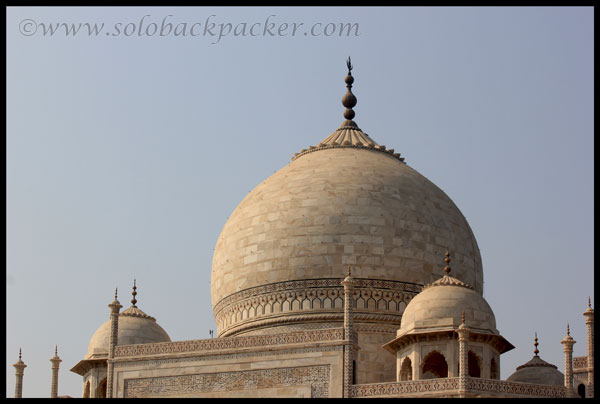
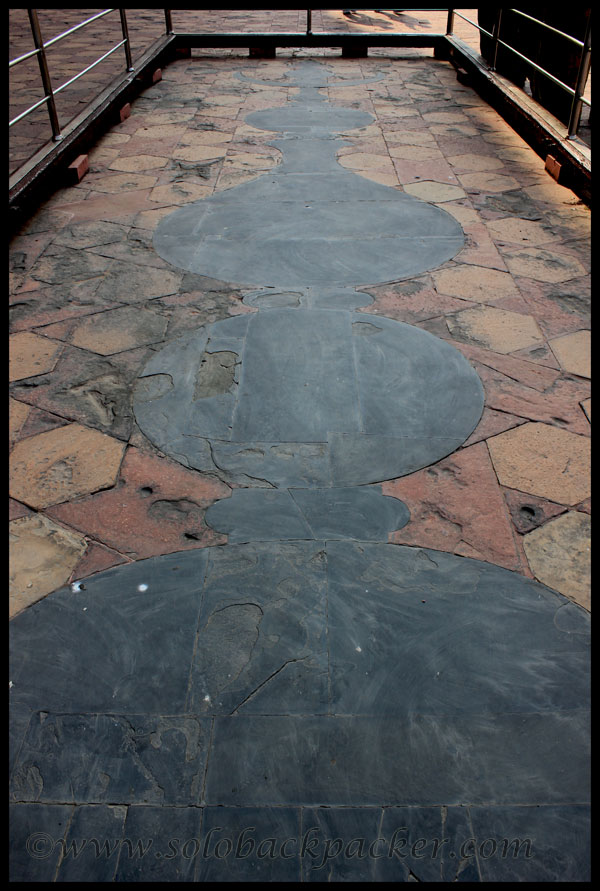
From the back side of The Taj, Yamuna River, Mehtab Bagh and Agra’s Red Fort are clearly visible on any clear day. But due to the smoke in the surrounding environment, we were not able to see the Red Fort clearly. Mehtab Bagh was also not very clear. However, in the river, we were able to see various birds tweeting and meditating ! Here, You will find many guides pointing towards the Mehtab Bagh and showing the location of the proposed Black Taj Mahal by Shah Jahan.
Taj Mahal Mosque is located on the west side of the Taj Mahal. It is exactly same as Mehman Khana in the structure. In front of this mosque, there is a small tank to wash the hands, before the prayer. This process of washing is known as Waju in Islam, that is why this tank is known as Waju Tank.

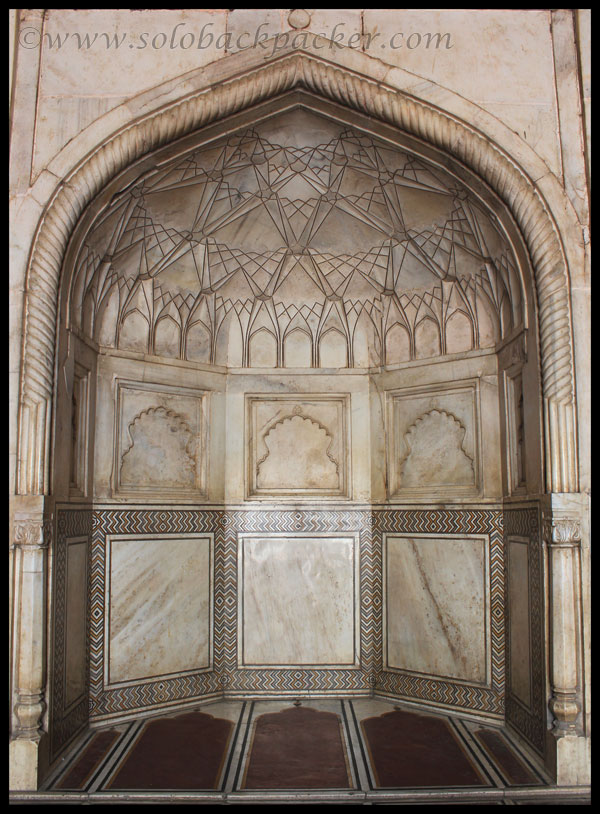
In this way, after encircling the entire Taj Mahal, we reached near the stairs going upwards on the white marble platform. It was the time to admire its beauty from nearby. Exterior design of the Taj Mahal is finest in Mughal Architecture. The decorative elements were created by applying paint, stucco, stone inlays, or carvings. Throughout the complex, passages from the Quran are used as decorative elements.
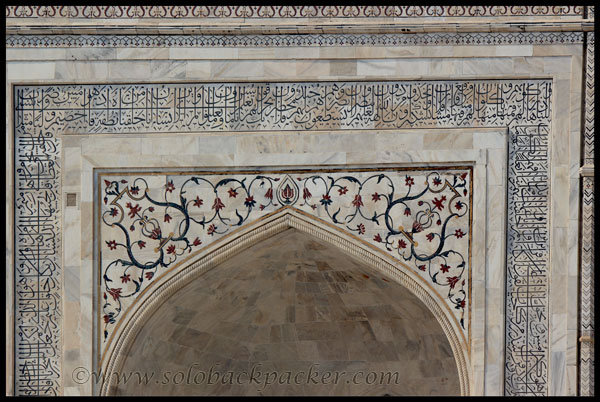
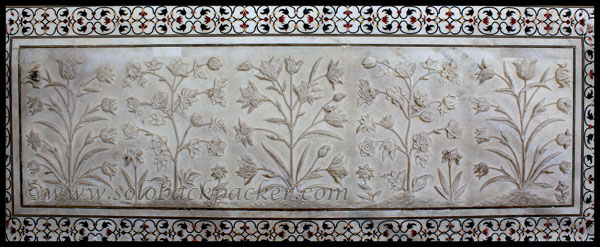
We went inside the mausoleum. The inner chamber is an octagon with the design allowing for entry from each face, although only the door facing the garden to the south is used. The cenotaphs of Shahjahan and Mumtaj Mahal are surrounded by an octagonal marble jali (screen). The cenotaphs of Shahjahan and Mumtaj Mahal are there at two levels. As you stepped inside the main mausoleum, you will come across the two cenotaphs, surrounded by the octagonal screen, which is actually a copy of the original cenotaphs built in the cellar below these cenotaphs. Bigger cenotaph belong to Shahjahan, while smaller one to Mumtaj Mahal. In fact, ShahjJahan’s cenotaph was built later on after his death. Now the entry to the main cenotaphs are prohibited. Photography is also prohibited inside the main mausoleum.
After paying our tribute to the souls of two great lovers, we came outside from the mausoleum and strolled towards the Taj Museum. This museum is just in parallel to the VIP seat in a corner of the garden of the Taj Mahal. It is a double storied building having a quadrangle projection outside and is built on a raised platform. There is no entry fee for the museum and photography is also not allowed. This museum houses a good collection of Mughal miniature paintings, manuscripts, government decrees, specimen of calligraphy, arms, utensils, plans and drawings of Taj Complex, paintings, specimen inlay work, marble pillars etc.
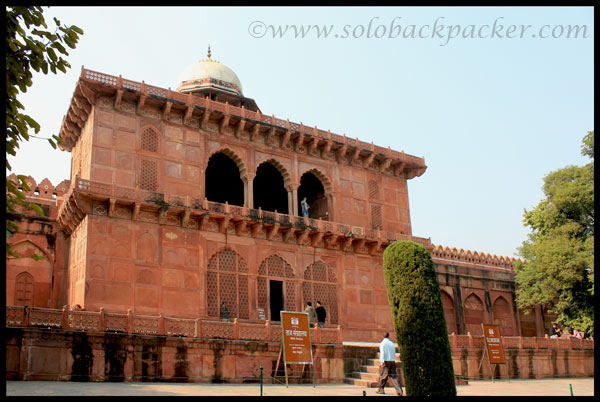
While returning from the museum, we again tried our luck at the VIP hot seat and succeeded this time.
By then, our trip to Taj Mahal has been completed, so we moved towards The Great Gate. Adjacent to The Great Gate on the South East side of the garden, there is a photo exhibition, which display the photographs of all eminent personalities, who came here on the visit to the Taj Mahal. These all pictures were clicked in Taj Mahal premises. It shows how important is the visit to Taj Mahal for a person, who is on a trip to India, whether on a personal or official.
By the time of mid-noon, there was a huge gathering of tourists. It looked like a fair. We moved out from the Taj Mahal to visit other places in Agra.
Evening at Mehtab Bagh: In the evening, we went to Mehtab Bagh to see the Taj Mahal in the evening. We all know that The Taj Mahal looks stunning from its grand entry. But Emperor Shahjahan booked the best view of Taj Mahal from a grassy, crescent-shaped floodplain across the river Yamuna, that is known as Mehtab Bagh. It is believed that this garden was built originally by Babur, but later Shahjahan transformed it into a moonlit pleasure garden profuse with white plaster pathways, breezy pavilions, pools and fountains. However, plaster pathways, pools and fountains are not visible now, but still this garden offers excellent views of The Taj Mahal in the evening.

Mehtab Bagh is a completely different place compare to other tourist destinations in Agra. There are plenty of fruit trees, beautiful flowers, herbs all around inside the garden minus the crowd of tourists. Mehtab Bagh was also rumored to be the proposed site for the Taj’s black marble twin that Shahjahan wanted as his mausoleum and linking it to the white Taj Mahal with a silver bridge cross Yamuna River. There is absolutely no evidence of Shahjahan having planned another prototype.

The beauty and sheer majesty of this structure attracts millions of tourists every year. It is a present from India to all those who believe in the power of love across the world and its glory will resonate for the years to come.


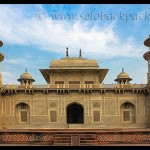
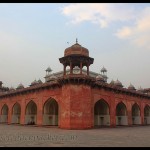
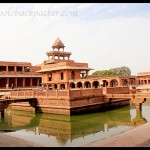
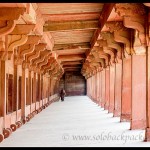
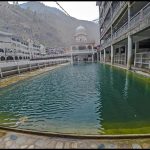
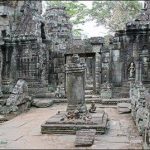
Very informative descriptions , great work ! Keep travelling and blogging …
Thank you very much 🙂
Thank you for sharing your wonderful experience. Much appreciated
What is the best time to visit Taj Mahal?
Best time is winter season only. Summer season is brutal hot. Full moon light gives a different perspective to its beauty. You may also enjoy it just after the rain. 🙂
But, in summer it would be very rush. Try to visit sep-oct. there won’t be much rush. But the climate eil be little bit hot.
Beautiful photos. Nice post on Taj!
Thanks Niranjan 🙂
Thanks for your grateful informations, am working in Tourism Website,
so it will be a better information’s for me. Try to post best informations like this always
Thanks to visit the post..I will always try to post the best information available to me.
Beautiful pictures, thanks for sharing…
Thanks Ajeeth..